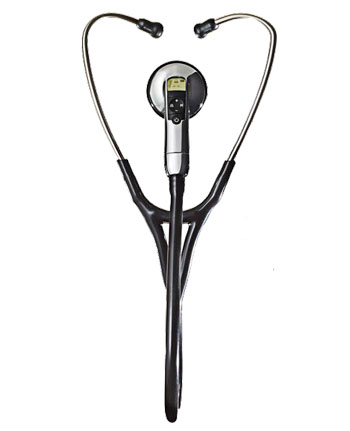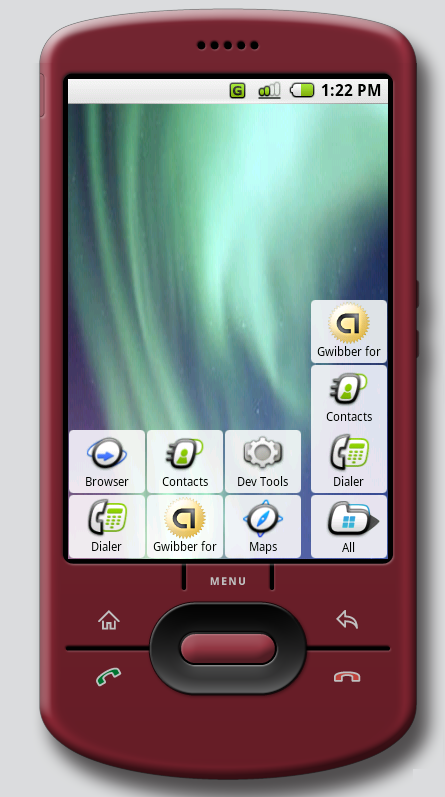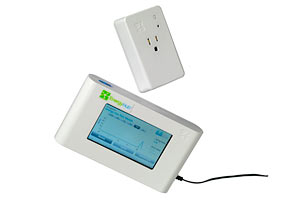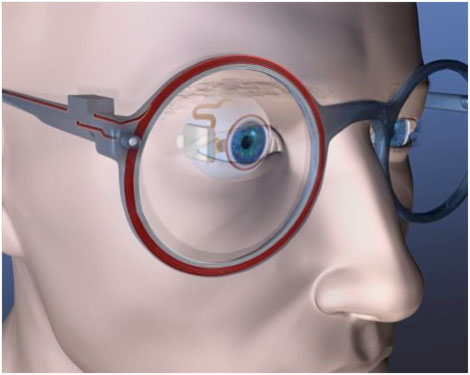10. 3M/Littmann Electronic Stethoscope Model 3200 With Zargis Cardioscan

The stethoscope hasn’t undergone many significant breakthroughs until now. 3M’s new stethoscope listens to a patient’s heartbeat, captures the sound for later playback, lets you transmit sounds real-time to your PC, which can then be further analyzed, attached to medical records, or reviewed online with colleagues.
The sound-amplifying 3M Littmann Electronic Stethoscope 3200 will not only be able to catch dangerous murmurs and heart defects but will also eliminate more than eight million unnecessary echocardiograms and cardiologist visits a year, saving some $9.4 billion.
9. Android Phone

The Android has proven itself a force to be reckoned with, offering a legitimate alternative to the all-mighty iPhone. If you haven’t heard, Android is a Google-backed operating system for cell phones. The code is free, open-source and easy to alter. Users can create their own interfaces and control many kinds of hardware, plus it has over 10,000 Android apps.
8. The Smart Thermostat

Called one of Time Magazine’s “best new gadgets” and “breakthrough ideas of the year”, the EnergyHub Dashboard is a device that lets you know exactly how much electricity (or gas) you’re using in your home and how much it’s costing you. It also turns appliances on or off and raises or lowers temperatures within your house depending on use. EnergyHub will be available direct to consumers in early 2010.
7. Robotic Exoskeleton
Still in its developing stages, powered exoskeletons are very clunky body suits designed to provide mobility assistance for aged and infirm people, giving them 10 times their normal strength. Similar to an Ironman suit, the military has also been working on their own version in order to assist and protect soldiers. Other possibilities for the exoskeleton include rescue work, such as in collapsed buildings. The device would allow a rescue worker to lift heavy debris, while simultaneously protecting the individual from falling rubble.
6. Microsoft Project Natal
Microsoft’s prototype system dubbed Project Natal is giving a whole new meaning to gaming: gaming with no controller at all. Your movements and voice control the game. The hardware component of the Natal system includes a color video camera, an infrared emitter and sensor that give it depth perception, a mic that figures out where you are, and a microprocessor to crunch all that data. The software component digests data in real time from 48 points on the body, plus audio input and delivers perfectly smooth game control.
5. XM25 Counter Defilade Target Engagement System (i.e. The Smart Bullet)

The XM25, currently under development for the U.S. military by Alliant Tech systems, allows soldiers to measure the distance to a target using a laser range finder, dials in exactly where the bullet should explode (over or past walls, the corner of buildings) at precise distances. At a cost of $30/round, the bullets are equipped with microchips capable of registering distance according to the number of times they’ve rotated.
4. Teleportation
Okay, so we won’t be seeing teleporting machines on the market for a while, but scientists at the University of Maryland’s Joint Quantum Institute successfully teleported data from one atom to another in a container a meter away. Atom-to-atom teleportation has major implications for creating super-secure, ultra-fast computers. Maybe one day, humans as well.
3. NASA Kepler Space Telescope
To boldly go where no man has gone before- but could potentially- NASA’s Kepler Space Telescope launched in March is tasked with searching habitable Earth-like planets in distant star systems. Using a photometer that’s more than three feet in diameter, Kepler is now continuously observing some 100,000 stars located between 600 and 3,000 light-years away. Scientists hope that Kepler could find dozens of habitable planets during its three-to-four-year mission.
2. The Electric Eye

MIT researchers are developing a microchip that will enable a blind person to recognize faces and navigate a room without assistance, helping the blind to regain partial eyesight. The chip, which is encased in titanium to prevent water damage, will be implanted onto a patient’s eyeball. Users are required to wear special glasses fitted with a small camera that transmits images to the titanium-encased chip, which fires an electrode array under the retina that stimulates the optic nerve. The glasses will help to power the coils surrounding the eyeball.
1. Sixth Sense
SixthSense is a wearable gestural interface that bridges the gap between intangible digital information and the tangible world. Using natural hand gestures to interact with information SixthSense is comprised of a pocket projector, a mirror and a camera which allows you to interact with objects in a way never before possible. You can take a picture simply by framing scenery with your hands or even hold up an object at a store and find out all relevant
Labels: teknologi
0 comments:
Post a Comment